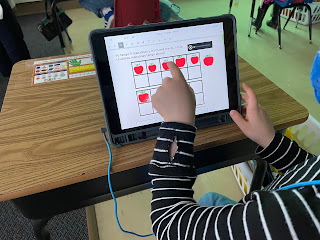TikTok, Snapchat, Fortnite, YouTube and more ... Technology is a big part of our kids’ world! Keeping up can be challenging, but a positive and well-informed approach can have a big impact on a child’s future and habits. Learn how to help kids develop a balanced and healthy use of technology from an early age and keep this up through the secondary school years and beyond.Get tips and ideas for parenting and understand the significant role you play in helping your kids be responsible and safe in today’s high-tech world. Numerous ideas and free resources will be shared, and time for Q & A will be provided.
Related Posts:
- Parenting in the Digital Age: Finding a Healthy Balance Part I
- Parenting in the Digital Age: Finding a Healthy Balance Part II
- Top Tips for Educators to Help Students & Parents with Technology (video)
- My 20 Minute Ed Talk: Screen Time & Student Well-being
- Minnetonka Screening "Like" Documentary About the Impact of Social Media
- Your Phone is a Slot Machine Purposely Designed to Be Addictive
- Apple Screen Time a Huge Win for Everyone, Including Parents!
- Top 10 Parenting Tips For a Tech Healthy Summer with Kids 2019
- If My Parents Only Knew: My NBC KARE 11 Interview About Kids, Tech & Parenting
- K-12 School Years: The Opportune Time to Learn Digital Balance
- The Digital Media Diet: Differing Types of Entertainment Screen Time
- What Story Are Your Kids Living Out in Fortnite? The Importance of Avoiding Violent Video Games
- Best Age for a Kid to Get a Cellphone with Internet Access
- Techcognition in an Attention Economy
- Happy Sweet 16! Now You Can Snapchat. (34% of Parents Don't Allow It Until High School.)
- Five Ways to Raise Digitally Balanced JOMO (Joy of Missing Out) Kids ina FOMO (Fear of Missing Out) World
- Be Where Your Feet Are: #RealTime with Those Around You
- Tech Free Family Dinners Focused on Gratitude
- Digital Mentors Needed: Distracted Parents Disengaged With Children
- The Difference Between Educational & Entertainment Screen Time
- Preventing Human Downgrading: A Race to the Top for Wellbeing
- One to Watch: Center for Humane Technology- Realign Technology with Humanity's Best Interest
- Over 1/2 of Parents Keep Digital Devices Out of Kids' Bedrooms Overnight
- Minnesota Trends in Social Media, Cyberbullying, and Digital Citizenship
- #DeviceFreeDinner: Will Ferrell PSAs on Common Sense Media
- Parenting with Purpose in the Digital Age... Managing New Devices Received at the Holidays
- How Long is Stuff Really Out There? My Students' 1995 Digital Footprint
- Coming Soon: MiPhone X with a Conscience Helps You T.H.I.N.K. Before You Post
- Can We Autocorrect Humanity? Get Busy Living
- Parenting with Purpose in the Digital Age... It's Complicated
- Parenting in the Digital Age Part 2: How Much Should Parents Snoop?
- Top 10 Tips for Tech Healthy Kids: Raising Digitally Balanced Kids



